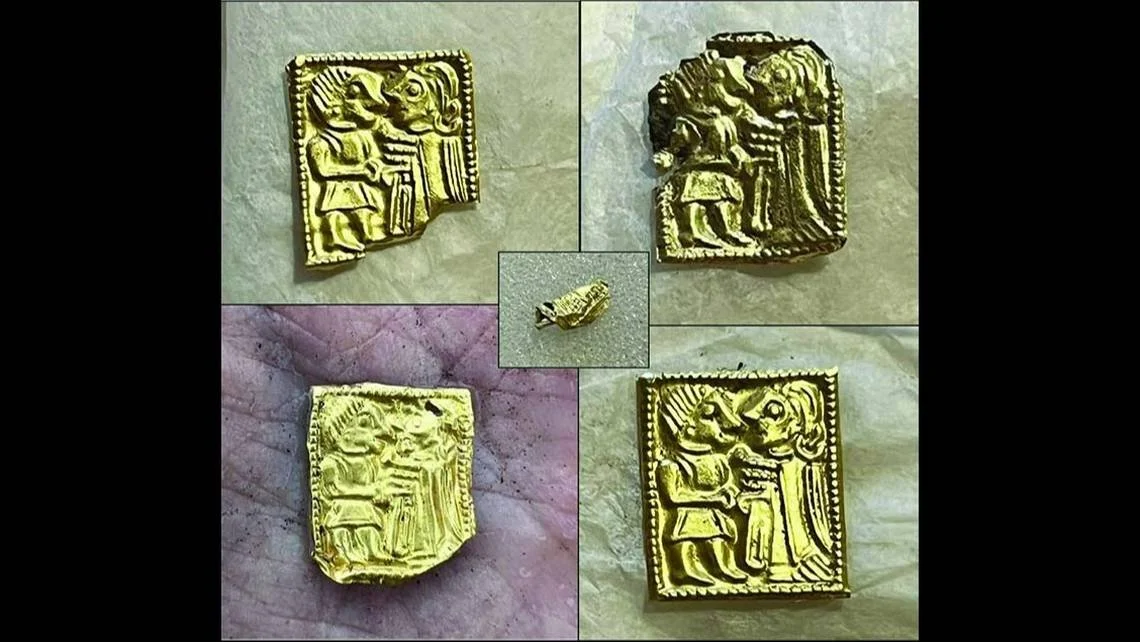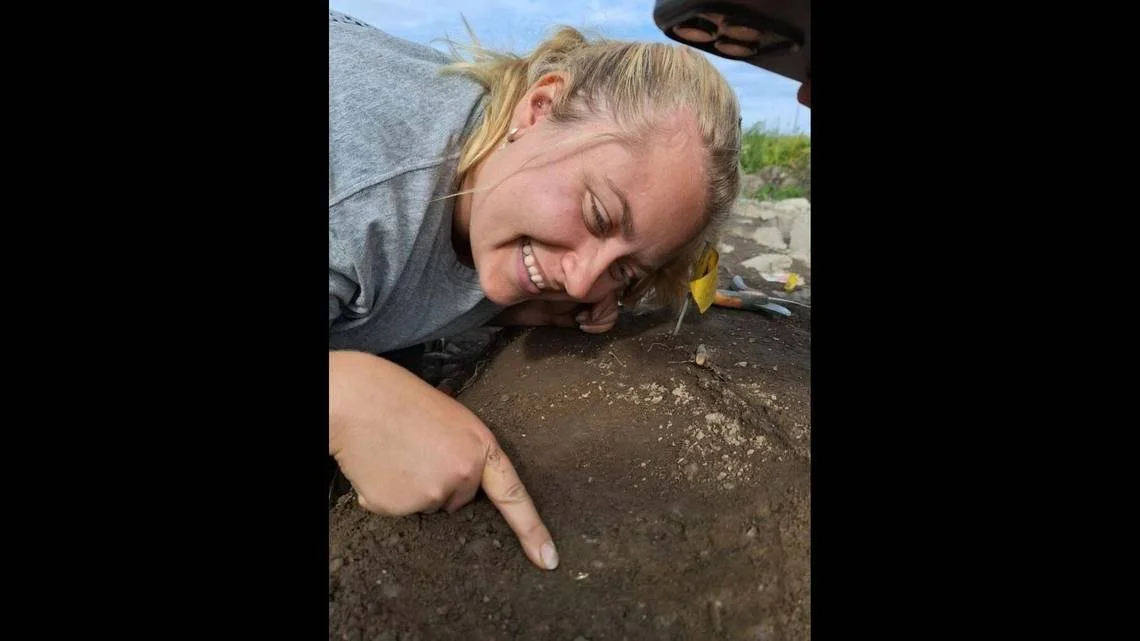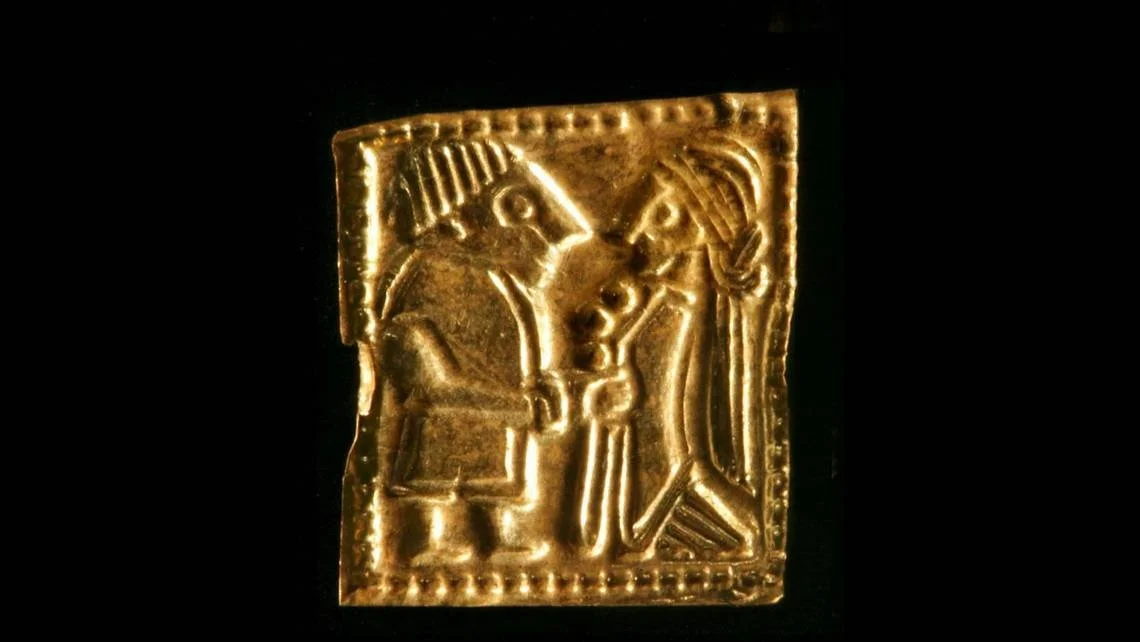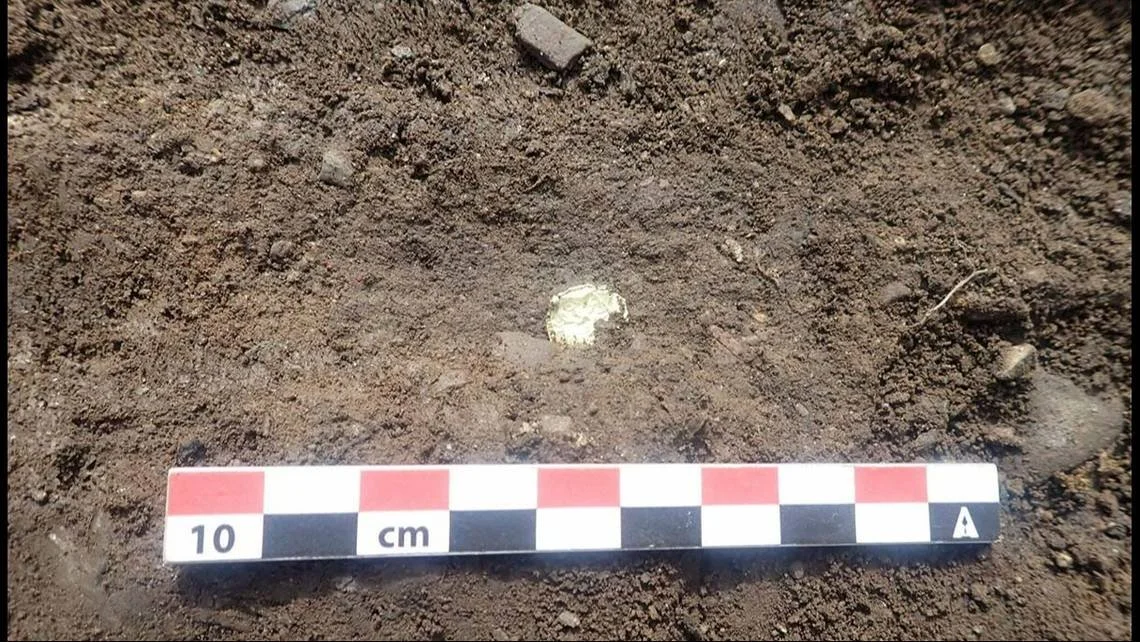A pagan temple's ruins were discovered by Harald Jacobsen thirty years ago while he was driving across Norway and noticing some unusual-looking dirt.
Archaeologists unearthed five ancient gold foil pieces while excavating a pagan temple in Norway, experts said. Kulturhistorisk museum
At the temple of Hov in Lillehammer, 30 pieces of gold foil have been found since then, although a complete excavation has never taken place. An detailed survey of the remains is currently being conducted because of the road's development.
The team undertaking the present excavation was prepared for the prospect that there may not have been any additional gold figurines at the site, despite the previous archaeologists' successes.
The gold foil objects were discovered during excavation at the temple of Hov, an ancient pagan temple, officials said. Kulturhistorisk museum
However, their planning was in vain. Five further pieces of gold foil were discovered when archaeologists were on the site, according to a Sciencenorway post released on September 19 by the Kulturhistorisk museum, which is in charge of the excavation.
Archaeologists found five new gold pieces. Kulturhistorisk museum
According to a Facebook post from Nicolai Eckhoff on September 12, archaeologists described the figures as square-shaped gold that was approximately the size of a fingernail and as thin as paper.
Archaeologists said found the gold pieces in remains of temple walls and post holes. Kulturhistorisk museum
According to Eckhoff's article, each piece has a stamp that usually depicts a man and woman facing each other. Typically, the woman is dressed, maybe with a cloak, while the guy is dressed in a shorter robe. Both figures frequently wear jewelry, have various hairdos, and are holding things.
Eckhoff claimed that although specialists have various views, they aren't exactly sure what the coins symbolize.
Each gold piece is decorated with an ornately dressed and accessorized man and woman, experts said. Kulturhistorisk museum
The coins, most people think, have ritual significance. Eckhoff explains that the coins were probably used as an offering in weddings or fertility rituals because it has been hypothesized that the pair pattern inscribed on the pieces is emblematic of an old mythological wedding of a god. Others believe that the gold coins might have been used in other rites as payment.
Archaeologists told Sciencenorway that the five most recent pieces may have been utilized as a protection offering at the temples because they were located inside the walls and temple foundation holes.
The gold pieces are thin as paper and about the size of a fingernail, archaeologists said. Kulturhistorisk museum
“It’s extra special that we can link the gold foil figures to the various parts of the building’s construction,” Kathrine Stene, who is leading the project, told the news outlet. “The gold foil figures in the post hole were not visible to people. Those we found in the wall would also not have been visible to others. So this doesn’t appear to be an admission ticket, but rather an offering or a religious act to protect the building.”
According to the source, archaeologists think the coins date from between 550 and 800. Oslo is located roughly 80 miles north of Lillehammer.












